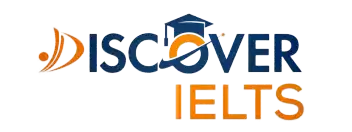The International English Language Testing System (IELTS) is a globally recognized examination that assesses the English language proficiency of non-native English speakers. Whether you’re applying for higher education, work opportunities, or immigration purposes, achieving a high score in the IELTS exam is essential. In this blog post, we will explore five simple steps that can help you crack the IELTS exam and achieve your desired score.
Step 1: Understand the Exam Format and Criteria
The first step towards success in the IELTS exam is to familiarise yourself with its format and criteria. The exam consists of four sections: Listening, Reading, Writing, and Speaking. Each section assesses specific language skills, and understanding the structure and requirements of each section is crucial. Take the time to review sample test papers, study the marking criteria, and become familiar with the types of questions you can expect. This knowledge will help you strategize your preparation effectively.
Step 2: Develop a Study Plan
Once you have a good grasp of the exam format, it’s time to create a study plan. Set aside dedicated study hours each day, focusing on one section at a time. Allocate more time to your weaker areas while ensuring you maintain a balance across all sections. Use reputable study materials and resources, such as official IELTS practice tests and guidebooks, to enhance your understanding of English grammar, vocabulary, and language usage. Additionally, consider joining an IELTS preparation course or finding a study partner to practise speaking and writing.
Step 3: Enhance Your Language Skills
Improving your language skills is vital for success in the IELTS exam. To boost your listening skills, practice listening to a variety of English audio materials, such as podcasts, interviews, and lectures. Pay attention to the speaker’s tone, accent, and overall meaning. For the reading section, read extensively to broaden your vocabulary and comprehension abilities. Focus on different genres and topics to adapt to the diverse reading passages in the exam.
In the writing section, practice structuring essays, developing arguments, and enhancing coherence and cohesion. Seek feedback on your writing from experts or native English speakers to identify areas for improvement. Lastly, for the speaking section, engage in conversations with English speakers regularly. Practice speaking on a range of topics, develop fluency, and work on pronunciation and intonation.
Step 4: Master Time Management and Exam Techniques
The IELTS exam is time-limited, so mastering time management is crucial. Practice answering questions within the allocated time for each section to build your speed and accuracy. Learn effective exam techniques, such as skimming and scanning for the reading section, to save time while comprehending the text. In the writing section, allocate time for planning, drafting, and proofreading your essays. During the speaking section, practice speaking at a consistent pace and structure your responses coherently.
Step 5: Take Mock Tests and Evaluate Progress
Regularly take full-length mock tests under timed conditions to simulate the exam environment. Mock tests help you evaluate your progress and identify areas that need improvement. Analyze your performance and review your answers to understand your mistakes and learn from them. Pay attention to time management, accuracy, and overall performance. By taking mock tests, you will become familiar with the exam’s pressure, which will enhance your confidence on the actual test day.
Conclusion
Cracking the IELTS exam is a goal that can be achieved by following five simple steps. First, familiarize yourself with the exam format. Second, focus on developing strong language skills. Third, practice with sample tests to improve your performance. Fourth, seek professional guidance to enhance your preparation. Finally, stay dedicated, motivated, and consistent in your efforts. With these steps, you’ll be well on your way to success in the IELTS exam. Good luck!

